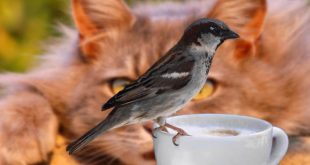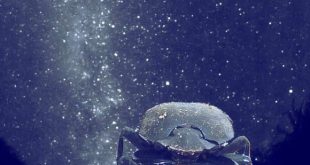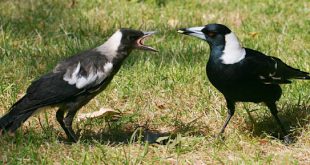Researchers have long suspected that color-changing animals like hogfish (Lachnolaimus maximus) don’t just rely on their eyes to tune their appearance to their surroundings — they also sense light with their skin; but exactly how ‘skin vision’ works remains a mystery. Now, a new genetic analysis of the hogfish reveals …
Read More »Oxygenic Photosynthesis May Have Originated Earlier than Thought
Dr. Tanai Cardona, a researcher with Imperial College London, UK, studied molecular machines responsible for oxygenic photosynthesis and found the process may have evolved as long as 3.6 billion years ago. This image is the crystal structure of Photosystem I. Image credit: Tanai Cardona. Photosynthesis is the process that sustains …
Read More »Biologists Find Rare and Unstable Mineral Vaterite in Alpine Plants
A team of biologists from the University of Cambridge, UK, has found that a very rare and unstable mineral called vaterite is a dominant component of the protective silvery-white crust that forms on the leaves of a number of alpine plants. The findings are published in the journal Flora. Saxifraga …
Read More »Primitive Air-Breathing Fish Share Mechanisms Controlling Heart with Mammals
An international team of researchers has discovered that systems enabling the South American lungfish (Lepidosiren paradoxa) to control blood flow during bouts of air-breathing have close similarities to those identified in mammals. The research appears in the journal Science Advances. The South American lungfish (Lepidosiren paradoxa). Image credit: OpenCage / …
Read More »New Species of Tardigrade Found in Japan
An international team of biologists from Poland and Japan has discovered and described a new species of tardigrade. Details of the micro-animal’s discovery are published in the journal PLoS ONE. Macrobiotus shonaicus. Scale bars in ?m. Image credit: Stec et al, doi: 10.1371/journal.pone.0192210. First discovered in 1773 by the German …
Read More »Scientists Find Mega-Colony of Adélie Penguins in Antarctica
A recent expedition to the Danger Islands, a chain of remote islands off the northern tip of the Antarctic Peninsula, used new technologies to discover and survey a breeding colony of over 1.5 million Adélie penguins (Pygoscelis adeliae). The discovery is reported in the journal Scientific Reports. Borowicz et al …
Read More »Rare Greenland Sharks Captured on Film in Canadian Arctic
A team of marine biologists from the Fisheries and Marine Institute of the Memorial University of Newfoundland has filmed Greenland sharks (Somniosus microcephalus) in their natural habitat in the waters of the Canadian Arctic Archipelago. Juvenile Greenland shark (Somniosus microcephalus). Image credit: Devine et al, doi: 10.1038/s41598-017-19115-x. One of very …
Read More »Study: Mammals and Birds Share Neuronal Cell Types Linked to Intelligence
Neuronal cell types in the avian brains linked to goal-directed behaviors and cognition are similar to cells in a region of the mammalian brain called the neocortex, says a new study led by University of Chicago’s Professor Clifton Ragsdale. According to Briscoe et al, IT neurons were present in the …
Read More »Nocturnal Animals Use Stars for Orientation
Nocturnal animals can use the stars and the Milky Way to find their way during the darkest hours, according to a new review article, published in the Proceedings of the Royal Society B. African dung beetles (Scarabaeus satyrus) use the glow of the Milky Way to navigate. Image credit: Emily …
Read More »Australian Magpies Living in Large Groups Are No Bird Brains: Study
A new study by researchers from the University of Western Australia and the University of Exeter shows that in wild Australian magpies (Gymnorhina tibicen), individuals that live in large groups show increased cognitive performance, which is linked to increased reproductive success. The Australian magpie (Gymnorhina tibicen) is a medium-sized passerine …
Read More » #Bizwhiznetwork.com Innovation ΛI |Technology News
#Bizwhiznetwork.com Innovation ΛI |Technology News









